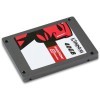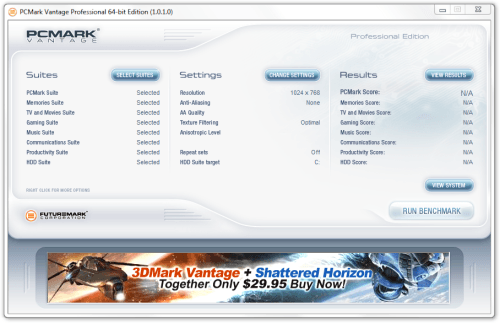- Qualcomm Launches Snapdragon 4 Gen 2 Mobile Platform
- AMD Launches Ryzen PRO 7000 Series Mobile & Desktop Platform
- Intel Launches Sleek Single-Slot Arc Pro A60 Workstation Graphics Card
- NVIDIA Announces Latest Ada Lovelace Additions: GeForce RTX 4060 Ti & RTX 4060
- Maxon Redshift With AMD Radeon GPU Rendering Support Now Available
Kingston SSDNow V Series 40GB

Want to make the upgrade to a solid-state drive, but prefer to avoid the high cost of adoption? Kingston helps ease that pain with its SSDNow V Series 40GB, a modest drive that features Intel’s NAND and impressive G2 firmware, which helps it deliver stellar performance when compared to an HDD, for an easy-to-stomach price.
Page 3 – Synthetic: PCMark Vantage
There are few PC enthusiasts who are unfamiliar with the name “Futuremark”, as the Finland-based developer has been producing quality benchmarks to help us gauge our computer’s worth for years. Originally known as Madonion, Futuremark has expanded its focus to go beyond its bread and butter, graphics and gaming, and tackle other areas, such as full system performance. That’s where PCMark comes into play.
The company’s most recent addition to the PCMark family is Vantage. For most users, a full suite would be run, but because we’re focused on storage performance only, we instead run only the storage-specific tests. Fortunately, Futuremark makes this easy for us to do as it has split up the entire suite into seven separate sub-tests, one being the aptly named “HDD Suite”.
PCMark’s HDD Suite may look simple on the surface, but it’s actually quite exhaustive. While the benchmark does deliver a simple “overall” result, it actually tests I/O performance based on a variety of scenarios, from adding music to Windows Media Player, to loading applications in succession, to editing video, to running a malware scanner, and more. It even includes metrics to evaluate a simulated Windows Vista boot time, so Futuremark has done a fine job of combining many useful scenarios into a single button press.










We have included the overall PCMark Vantage score in the results above, as interestingly enough, the choice of storage medium does have an effect on some of the other non-HDD Suite tests. For example, the memory assessment features is one test where several large images are loaded into the RAM for editing. This combines with the high storage assessment results to raise the final score even higher.
All three SSDs finish close together, leaving the HDD in a distant fourth. Unfortunately, this is a foreshadowing for what we can expect from the outmatched hard disk drive.
The Summit’s great sequential write performance helps counter the second generation Intel controller’s excellent random read performance and keeps the two drives fairly close in the overall HDD score. As a brief note, it is a little unusual that the X25-M results were a bit on the low side. Even so, the results were consistent, even after a complete re-installation of the OS.
The Kingston again excels in random small read and write situations, allowing it to place constantly at or near the top of the charts and even exceeding the performance of its older sibling.
About the only thing we waited to mention was the HDD’s performance. It consistently placed a distant last in every test, save the Windows Media Player test. Results like these makes one almost wonder how people could get along with just an average consumer disk drive! Okay, we kid, but still it is clear to see that any program which involves any sort of random operations involving lots of seeking across the disk surface will make for one of the worst case scenarios for the traditional hard disk.
Support our efforts! With ad revenue at an all-time low for written websites, we're relying more than ever on reader support to help us continue putting so much effort into this type of content. You can support us by becoming a Patron, or by using our Amazon shopping affiliate links listed through our articles. Thanks for your support!





